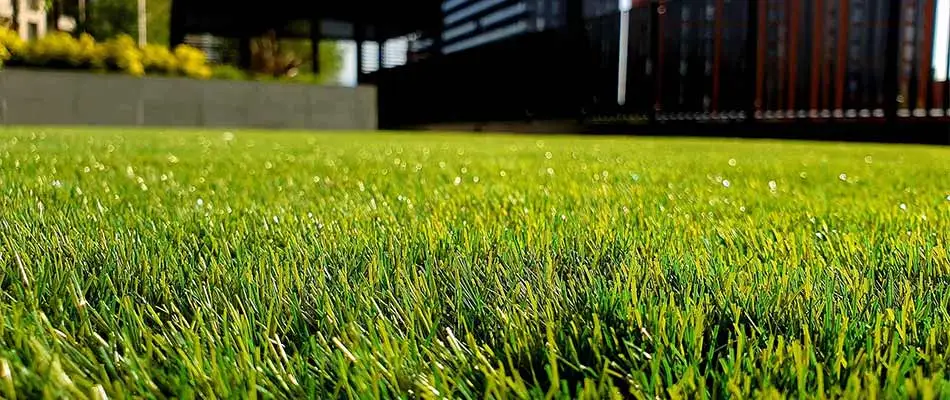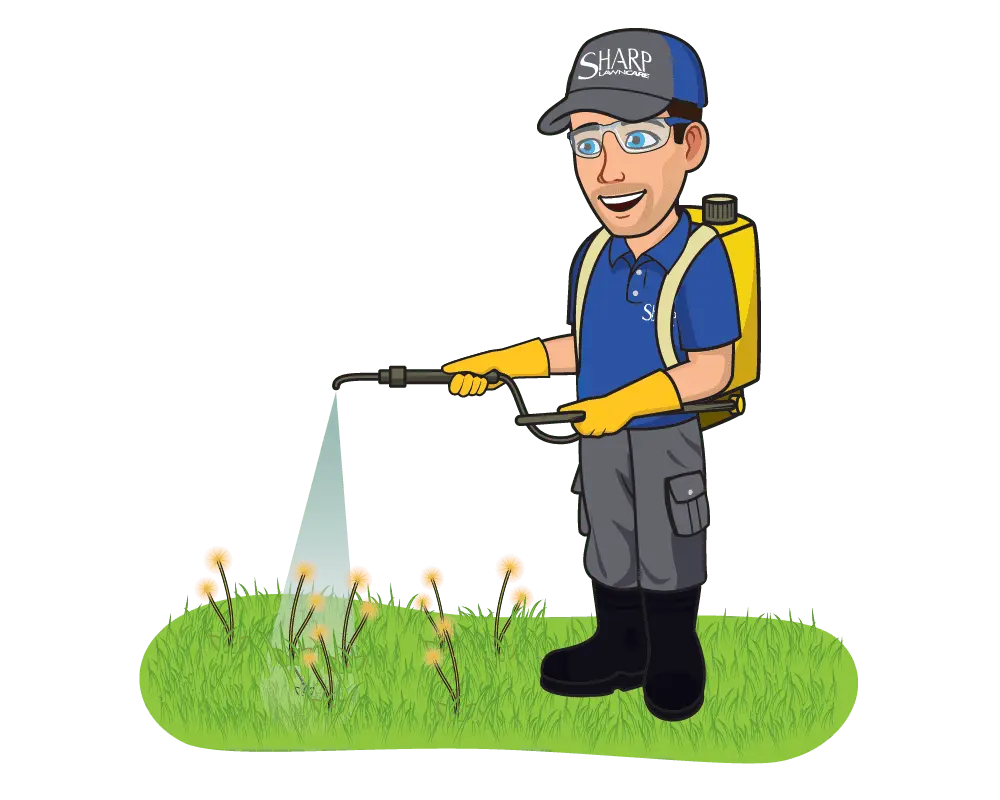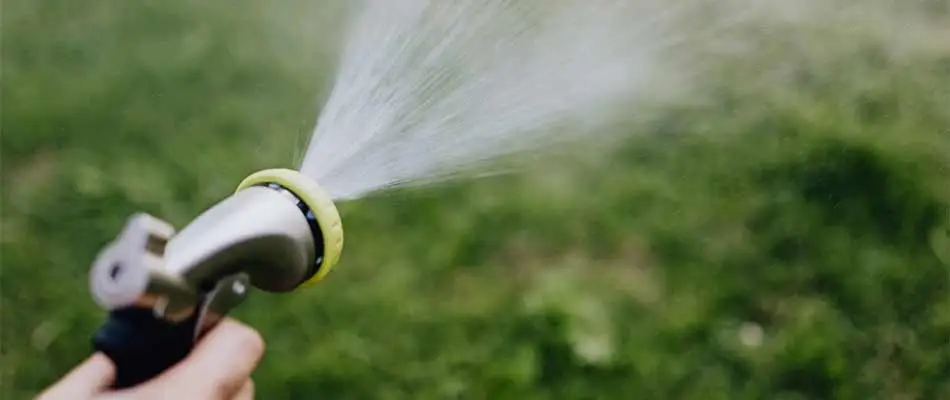When you buy your first home, chances are it’s the first time you’re caring for a lawn as well. The times Mom and Dad got you up early on Saturday mornings as a kid to mow the grass don’t count! Caring for your first lawn is an exciting thing, but it can be a little intimidating as well. Pretty quickly, you come to see that lawn care has a lot more going on than just cutting grass and pulling weeds. Knowing how to select the right grass type, when to seed, how to nourish and water your grass, and how to fight weeds effectively are among the many basic steps you have to learn and master. Here, we’re going to cover those steps one at a time to make everything clearer and way less overwhelming for you.
What's Your Soil Like?
Testing soil is a step a lot of people skip, but it can really save time and trouble down the line. Knowing your soil’s ph and other essentials provide a great starting point for planning your lawn. If there are bare spots or other trouble areas, test them separately in order to find out what’s going on there.
One easy way to test your soil is to call a pro lawn care service, but if you’re testing it yourself, you can get information about test kits and labs from a local agricultural agent or county extension office.
Identify and Address Trouble Spots
Carefully inspect your lawn for trouble spots such as bare patches and get straight to work fixing them. If you’ve had the soil from those places tested, you can use the results to guide you through the process so that you get it right the first time. You’ll get recommendations for additives such as lime or other steps to take.
Plant the Right Grasses for Your Region
When deciding what type of grass to plant, you have to know which grasses grow best in your region.
Most people plant either cool-season grasses such as Kentucky bluegrass, ryegrass, and assorted fescues, or they plant warm-season grasses such as Bermuda grass. Cool-season grasses grow well in the cooler spring and fall seasons, and warm-season grasses flourish in the heat of summer.
Here in the Upper Midwest, cool-season grasses predominate, and they’re what we recommend you plant.
Seed Properly from the Start
Timing is everything when it comes to seeding your lawn. A lot of people assume summer is a good time for it because of the consistent warm days, but that’s actually about the worst time to seed in our region. It’s just too hot for new grass to make it, and even if it does take and start to grow, there’s a good chance it will die.
Spring is the other time many assume is prime for seeding, but that isn’t right, either. New grass planted in early spring competes with weeds, and weed-control measures sometimes kill the greenery you want. Waiting until later in the spring puts you too close to summer and doesn’t give the grass enough time to grow deep and strong enough to endure the heat. Even careful management of early seeding and weed control still doesn’t guarantee new grass will be ready for summer when it arrives.
Fall is actually the best time for seeding in our region because you still have several good growing weeks to come, temperatures are ideal, weeds are under control, and the new grass establishes itself so that it gets off to a great start the coming spring. We go into this in a lot more detail in some of our other Learning Center articles, including this one on the best times to plant new seeds.
Give Your Grass a Healthy Diet

To grow well, grass needs certain nutrients such as nitrogen, phosphorus, and potassium. Since those nutrients don’t naturally exist in sufficient quantities in lawns, you have to effectively feed them to your grass just as you might use vitamins to supplement your diet if you’re not getting enough calcium or Vitamin C. When you fertilize, you’ll have to choose between a slow-release formula or a quick-release one. Slow-release fertilizers are granular and you apply them with spreaders; they cost more and take longer to work, but they last longer and are harder to misuse. Quick-release fertilizers are sprays; they’re cheaper and they work faster, but they don’t last as long and thus have to be applied more often, and they can harm the lawn if you over-apply them. Those soil tests you did come in handy again here, as the results will help you determine which nutrients your soil needs more of, therefore helping you select the right formula. Fertilizing is best done at times of strong growth such as spring and fall, and it often goes hand in hand with seeding and weed control. Since fertilization and weed control can be tricky to manage at the same time, a lot of professional services such as Sharp Lawn Care offer packages providing expert application of both so that you don’t have to worry about it. For a more in-depth look at fertilization, please read our Learning Center article on the subject.
Aerate Your Lawn, Too
Have you ever felt in need of a little extra room to breathe? Sometimes your lawn feels that way, too. Aeration is a process of churning your soil so that excess matter gets removed so that sunlight, water, and other nutrients can penetrate the soil and reach the grassroots, promoting healthy, sustained growth. Like fertilization, aeration works best in spring and fall when growing conditions are best in our region. For that reason, we recommend combining the two since adding fertilizer right after aerating can produce great results.
Fight Weeds Aggressively

Weeds can take over a lawn and ruin it in no time, and they’re not something you want to mess around with or put off. The longer you wait, the bigger the problem becomes and the harder it is to fix. First, it’s important to know that weeds are going to happen no matter what you do. What’s key is using prevention when you can and effectively fighting weeds when they do appear. Weed control consists of two different approaches. The first is the use of pre-emergent treatments. These are common in the spring because they prevent the growth of certain weeds such as crabgrass from taking place at all. Some weeds can’t be addressed with pre-emergents because they pop up later in the season. Dandelions and clover are good examples. For them, there are post-emergent treatments to selectively target spots or to go after broader areas. Thick, healthy grass is really the best defense against weeds, but knowing how to combat them since they’re going to show up anyway is a critical part of caring for your first lawn. Learn more about the dos and don’ts of weed control, plus the pros and cons of doing it yourself vs. hiring a professional service, here. Also, you can get a really detailed look at types of weed control in our articles on pre-emergents and post-emergents.
Mow the Lawn Properly
Okay, maybe we’re biased, but we don’t think lawn mowing gets the respect it deserves. It’s a misconception that just running a mower over the grass every week or two is enough; there’s more to it than that, namely attractive patterning, not creating ruts or damaging the soil, and cutting to the proper height for the season. We want to emphasize that bit about proper grass height a little more. Once again, it’s important to know what types of grasses you have and what their growth patterns and cutting needs are. There’s always a temptation to cut grass really short because maybe that’ll save you another session next weekend. Cutting grass too short leaves it vulnerable to heat, drought, and weeds. So yes, maybe you’ll end up spending less time mowing the lawn, but not for the reasons you expected! When you leave your grass too long, it can be difficult to cut the next time, requiring extra passes or even presenting risks to the lawnmower because of overworking the engine. Another drawback is that overly high grass can attract insect pests that can damage your lawn and/or be anything from a nuisance to harmful for you. “Mowing Done Right” is the title and subject of this Learning Center article that we know you’ll find very helpful.
Water Your Grass Wisely

Watering your lawn is a lot like mowing it: you have to avoid too much and too little. The obvious trouble with underwatering is not allowing the grass to get the moisture it needs. Overwatering presents several risks of its own: standing water, muddy spots, seeds washed away or buried, unwanted fungal growth, and damage from foot traffic. While the exact watering schedule that’s right for your grass is going to vary according to the conditions (great idea to consult a pro about this), it’s generally best to water for longer periods at less frequent intervals and to water at times when evaporation and pooling are less of a concern. When you’re caring for your first lawn and there’s a pretty good chance you’ll be doing some new seeding, watering gets even trickier and really requires a perfect touch. To help homeowners with this, we wrote an article on properly watering a newly seeded lawn, and we encourage you to read it for some valuable tips and other information.
Expert Lawn Care is Just a Click or Phone Call Away!
Taking care of your first lawn looks like a lot of work, and it is. However, the payoffs when you do it right are really rewarding, and they add beauty and value to your home for years to come. Fortunately, you don’t have to do it all on your own if you don’t want to or think it’s too much for you. Sharp Lawn Care, the region’s industry leader, offers a full range of services and unbeatable value. We’re ready to save you time, reduce your stress, and help you have a lawn to envy!




Comments (0)
Thanks for your comment!
Thanks for your feedback! Your comments have been successfully submitted! Please note, all comments require admin approval prior to display.
Error submitting comment!
There is a problem with your comment, please see below and try again.